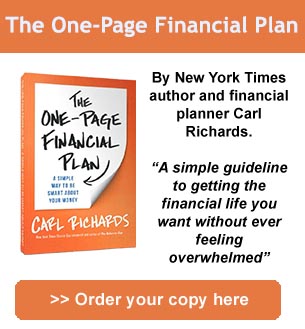I’m going to assume for a minute that you’re one of the millions of people who have a recurrently frustrating relationship with spending.
It probably starts with a commitment to sticking to your budget, and you do for a few days.
Then, despite your resolve, you break down, pull out the credit card and do something that you promised you wouldn’t.
You wake up in the morning ashamed and resolve never to do it again.

Then you repeat.
Been there?
Done that?
Frustrated, you wonder what’s wrong.
You’re smart, you’re successful, and when you set your mind to something, you’re able to do it.
I think we can all relate.
If not money, insert food.
So what can we do about this problem of knowing we should act one way but repeatedly doing something different?
The answer lies in understanding the relationship between the stimulus to do something, how we respond and a little secret I’ll share in a minute.
But first, here’s the problem as I see it:
Almost all personal finance advice focuses on controlling the stimulus or your response to it.
Gurus tell you to stop looking at Instagram, stay off Facebook, fire all your nonfrugal friends and disown your spendthrift family members.
That is an effort to control the stimulus.
Then, you’re told to control your response.
Most of this advice centers on making it painful to spend
. Cut up your credit cards.
Use only cash.
Track, review and feel bad about your spending.
It works until it doesn’t anymore.
You can’t ignore all the voices screaming at you to spend, and making spending painful increases the feelings of shame when we do something wrong.
It only leads to more spending as a form of self-medicating.
So here’s the little secret I promised, and it’s not mine.
It’s most often attributed to Viktor Frankl.
Perhaps best known for his book “Man’s Search for Meaning,” Frankl, an Austrian neurologist and psychiatrist, also appears to have given us this bit of insight:
“Between stimulus and response there is a space. In that space is our power to choose our response.” 
Whoa! There is a third element to this little dance with stimulus and response.
To break this frustrating spending cycle, we can focus on creating space between the two of them.
It starts by acknowledging that the space exists.
Most of us don’t even know it’s there.
We see a Twitter post about a book someone likes, the post has a link to Amazon, we click the “one click buy” button, and then we own a book with little to no thought.
So we need to practice pausing once we’re in that space between.
The advice to use cash or to lock up the credit cards can be useful here if it creates space between our desire to buy and our actual buying.
It can also be as simple as training ourselves to notice the desire.
How does it feel to want something?
One way of creating space that I’ve shared before is the 72-hour rule.
Before I started following the rule, I had stacks of unread books all over my office.
Now if I hear of or see a book that sounds interesting, it goes on a list I created in my Amazon account called “The 72-Hour List.”
If I still want the book when I return 72 hours later, I buy it.
There’s now a really long list of books I’ve never bought and fewer piles in my office.
I didn’t need to bar myself from reading book reviews or allow myself to buy books only with cash.
By adding a little space, I gave myself the opportunity to change my response.
How you add space is up to you, but once you get good at creating it, then some of the other things matter less. 
This is just one simple trick to create space.
I think you’ll find that by focusing on the space between, you can let go of your anxious grasp on the stimulus and response.
If you get the space right, the other two take care of themselves.
I’d love to hear from you.
What have you done to create space?
How has it helped you?

No comments:
Post a Comment